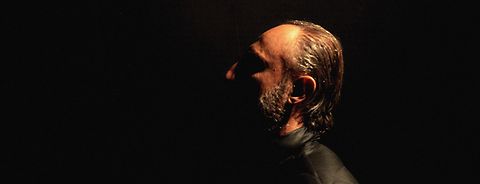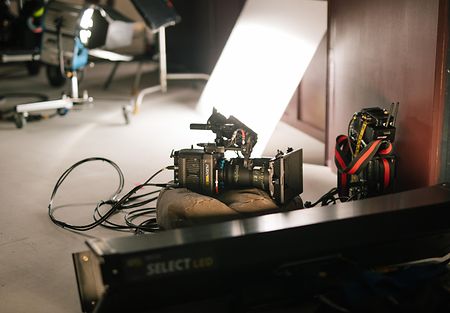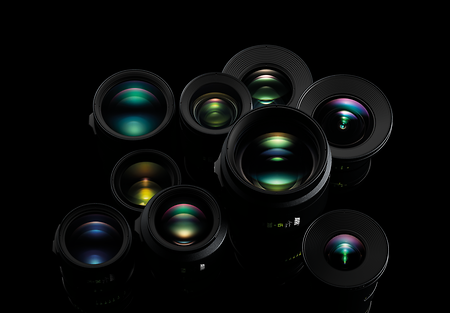DP Christophe Offenstein was awarded with the prestigious French César Award for Best Cinematography for his work on “Valley of Love,” a picture he created together with director Guillaume Nicloux. The two filmmakers were recently reunited for feature film “La Tour” which was presented at the Deauville Festival 2022. ARRI spoke to Offenstein about his choice of equipment, the dark aesthetic of “La Tour” and the fruitful collaboration with his director.
“La Tour” is a very different project from the previous films you have made with Guillaume Nicloux. How did you approach this venture?
“La Tour” is a genre film set in the heart of a building where the inhabitants wake up one morning enveloped in a thick, opaque fog that blocks off doors and windows. This situation creates anxiety and breathless suspense. Most of the film is set in the heart of the tower; its narrow staircases and flats without daylight. This meant that I had to work hard to create the unexpected, despite the recurrent locations. I had to avoid a systematic treatment at all costs.
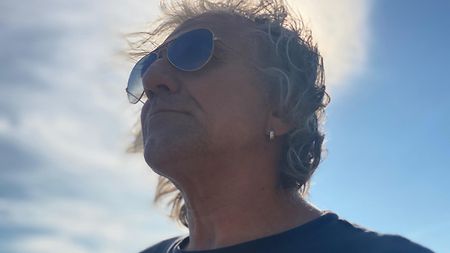
DP Christophe Offenstein worked hard to create the unexpected in “La Tour“
How did you create the very dark aesthetic of “La Tour”? What was Guillaume Nicloux’s request in terms of image?
Guillaume and I know each other very well because we have made several feature films together. He gave me some references, like David Cronenberg’s films and some American series but nothing very precise. It was up to me to interpret. At the beginning, we started with a rather cold atmosphere but, in the end, we were warmer than initially planned. On the other hand, I wanted a contrasting image from the start. This was essential to create a worrying atmosphere with suspense and fear. Apart from the first third, the film is very much based on low light, with natural lighting like flames and torches. It’s a very strong aesthetic.
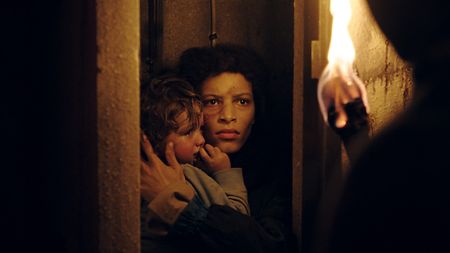
“La Tour” is mostly based on low light, with natural lighting like flames and torches
Why did you choose ARRI Signature Primes for this film?
After testing different lens ranges, the Signature Prime series, in combination with the ALEXA Mini LF, proved to be the best solution. I really enjoyed working with these lenses. The result is impressive. In fact, the Signature Primes are sharp without being too sharp. They are soft enough to give an excellent result. At full aperture, they don’t press the edges of the picture. It was important for me not to have an image that would emphasize the characters too much. I also wanted to shoot with a very open diaphragm to break up the background and maintain the tension around the characters. That was my vision for this film. I almost always used the Signature Primes at their full aperture, at 1.8. Most of the time we only had one inch depth of field on the characters. It was a very complicated film to deal with in terms of focus.
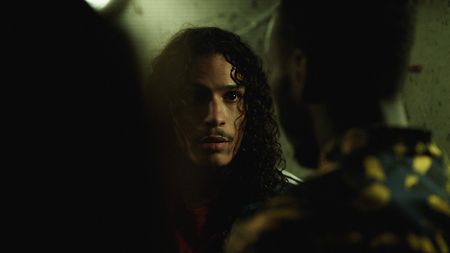
French rapper Hatik is one of the lead characters in “La Tour”
What lenses have you used most in the ARRI Signature Primes series?
This was the first time I used these lenses. They had only been available for a few months before the shoot. I worked mainly with short focal lengths, from 25 mm to 40 mm. It’s a very nice set. ARRI did a great job with the Signature Primes. They are lenses that do not distort. They are perfectly adapted to the ALEXA Mini LF. When I work in large format, I have almost the same focal length as in anamorphic. I can frame wider, with less distortion and a shallow depth of field. It’s very interesting to work with these lenses.
What made you choose the ALEXA Mini LF?
I’ve been working with ALEXA cameras for a long time and I’ve used the LF on another film as well. I really like the definition of the ALEXA Mini LF. It gives me more room to maneuver in postproduction if I need to tighten up an image and zoom in. I can do that without compromising the quality. Above all, with the ALEXA Mini LF, I have perfect color rendering. The color ratio is excellent; the reds are not undersized. I also have more detail in very low light. It’s a camera that goes very far at the base of the curve. It accepts huge differences in F-stops. This was very important on “La Tour” because we were shooting in very low light, with characters who might hold torches in their hands. The Mini LF could handle 16 stops of deviation without burning out the highlights and still retain detail in the blacks. This is impressive.
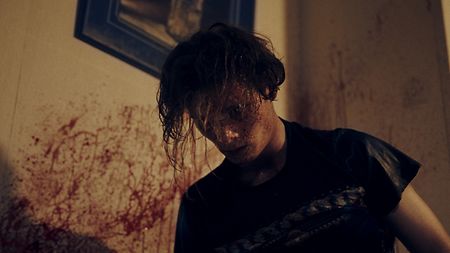
“I really like the definition of the ALEXA Mini LF,” says DP Christophe Offenstein
Did you shoot “La Tour” in a studio?
Not at all. The whole film was shot on a natural set in an old abandoned tower block with lots of narrow staircases and real flats. Everything was shot handheld or with a Steadicam. I absolutely had to have a compact camera that could fit into these very small spaces. The ALEXA Mini LF was indispensable in this setting. The director wanted to immerse viewers in realism so they could identify with the characters even more. The shoot lasted four weeks, in this unique setting with a small, very mobile crew, consisting of people who know each other well. Everything moved very quickly.

Christophe Offenstein: “The director wanted to immerse viewers in realism so they could identify with the characters even more”
You won a César for the cinematography of “Valley of Love,” directed by Guillaume Nicloux. How would you describe your method of collaboration?
A cinematographer’s job is to make himself available and listen to the director’s wishes. You really have to be in agreement. This is what a prize like the César for “Valley of Love” highlights: It is the fruit of a beautiful agreement, of a collaboration that went admirably well. Guillaume Nicloux is a true director of images. We know each other well, so we work quickly. I quickly understand where he wants to go. It’s an important asset for a film if you don’t have to go through all these stages of trying to understand how the director works. We both like clear communication. This is the advantage of having made several films together.
Photo credits: Dark Star
